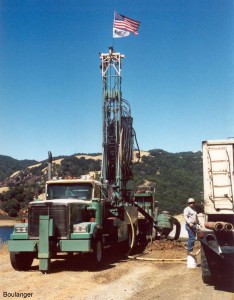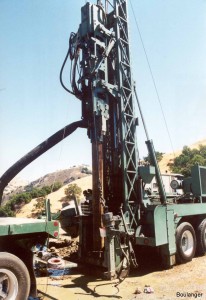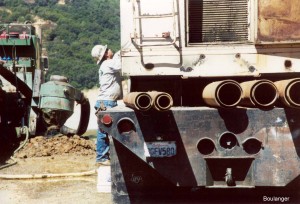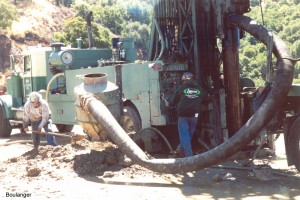Becker drilling rigs are often used for exploration and penetration testing in deposits with coarser particles (e.g., gravels, cobbles) where standard drilling techniques and SPT testing may not be feasible.

This Becker drilling rig has its mast raised on the rear and is ready for drilling. Becker drilling may be performed as “open bit” or “closed bit”, as described to the right. Sometimes companion holes are drilled side-by-side using the two different techniques.

The steel drill stem is driven into the ground by a double-acting diesel hammer. During “closed bit” testing, the casing end is plugged and the casing is driven like a solid penetrometer. The number of blows to drive the casing each foot are recorded, along with the diesel hammer’s bounce chamber pressure, and used to infer soil characteristics via empirical relationships.

Different size casings are available, as shown on the supply truck. The casing is double-tubed with an annulus between the inner and outer tubes. During “open bit” drilling (i.e., the end is open), high-pressure air is forced down the outer annulus and returned up the inner tube. The returning air carries soil cuttings up to the ground surface.

During open-bit drilling, the return air carries the soil cuttings to a “cyclone” where the soil loses velocity and drops out the bottom onto a cuttings pile. A large flexible tube carries the air return from the top of the casing (upper-right of photo) to the cyclone (mid-left of photo). The field engineer must carefully record the nature of the cuttings, the diesel hammer’s bounce chamber pressure, and the hammer-blow rate throughout drilling.
